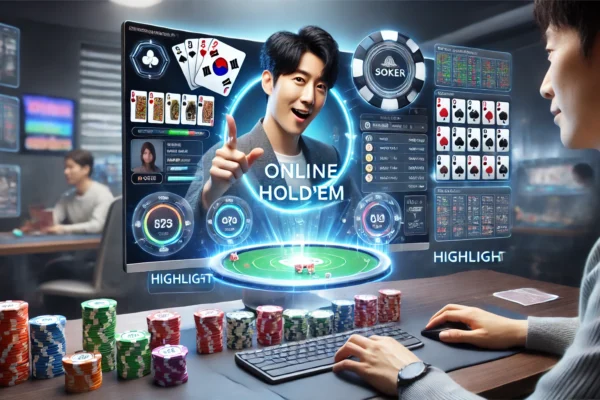The retail landscape is undergoing a seismic shift, with e-commerce emerging as a dominant force that is reshaping consumer habits and expectations. Shopping malls, once the quintessential retail environment, are at the forefront of this transformation, navigating the challenges posed by the rise of online shopping. “Retail Revolution: How Shopping Malls Are Adapting to E-Commerce Challenges” delves into how malls are responding to the digital age, exploring innovative strategies and adaptations that are redefining their role in the retail ecosystem.
### The Rise of E-Commerce
1. **E-Commerce Boom**
– **Growth Trajectory**: E-commerce has experienced exponential growth over the past decade, driven by technological advancements, convenience, and a shift in consumer behavior. The ability to shop from anywhere, at any time, has made online retail a formidable competitor to traditional brick-and-mortar stores.
– **Changing Preferences**: Consumers increasingly value the convenience of online shopping, from browsing and purchasing to home delivery. This shift has challenged shopping malls to rethink their traditional business models and adapt to evolving consumer expectations.
2. **Impact on Traditional Retail**
– **Foot Traffic Decline**: The rise of e-commerce has led to a decline in foot traffic to physical stores and malls. Shoppers now spend more time online, leading to reduced visits to malls and impacting in-store sales.
– **Retail Store Closures**: Many traditional retailers have struggled to compete with the low overhead costs and extensive reach of online platforms. This has resulted in store closures and vacancies in shopping malls, further compounding the challenges faced by physical retail spaces.
### Strategies for Adaptation
1. **Experiential Retail**
– **Creating Experiences**: To draw consumers away from their screens and into physical spaces, malls are emphasizing experiential retail. This involves offering unique and engaging experiences that go beyond shopping, such as interactive displays, immersive installations, and hands-on product trials.
– **Events and Activities**: Malls are hosting events, such as pop-up shops, product launches, and live performances, to attract visitors and create a vibrant atmosphere. These events help build community engagement and offer experiences that online platforms cannot replicate.
2. **Integration of Technology**
– **Omni-Channel Retailing**: Malls are adopting omni-channel strategies to bridge the gap between online and offline shopping. This includes services such as click-and-collect, where customers order online and pick up their purchases in-store, and easy returns for online orders.
– **Digital Tools**: Advanced technology, such as digital directories, interactive kiosks, and mobile apps, enhances the shopping experience by providing real-time information and personalized recommendations. Technology also helps malls track foot traffic and analyze consumer behavior.
3. **Enhanced Customer Service**
– **Personalized Service**: Shopping malls are focusing on delivering exceptional customer service to differentiate themselves from online competitors. This includes offering personalized shopping assistance, concierge services, and exclusive in-store experiences.
– **Loyalty Programs**: Malls are implementing loyalty programs that reward frequent shoppers with discounts, exclusive offers, and early access to sales. These programs help build customer loyalty and incentivize repeat visits.
4. **Diversification and Mixed-Use Spaces**
– **Beyond Retail**: To remain relevant, malls are diversifying their offerings beyond traditional retail. This includes integrating dining options, entertainment venues, fitness centers, and cultural spaces, creating destinations where people can spend time and enjoy a range of activities.
– **Mixed-Use Developments**: Many malls are transforming into mixed-use developments that combine retail, residential, office, and recreational spaces. This approach maximizes the use of space and attracts a broader demographic, contributing to vibrant and sustainable communities.
### Case Studies and Innovations
1. **The Mall of America**
– **Experiential Focus**: The Mall of America in Minnesota has reinvented itself as an experiential destination with attractions like an indoor amusement park, aquarium, and mini golf. By offering a variety of experiences, the mall draws visitors for more than just shopping.
– **Technology Integration**: The mall utilizes technology such as a mobile app with interactive maps, real-time event updates, and personalized recommendations to enhance the visitor experience.
2. **The Shops at Hudson Yards**
– **Mixed-Use Concept**: The Shops at Hudson Yards in New York City exemplify the mixed-use approach, featuring luxury retail stores, fine dining, and cultural spaces. The development includes residential units and office spaces, creating a vibrant urban hub.
– **Innovative Design**: Hudson Yards integrates advanced technology and sustainability practices, such as energy-efficient systems and smart building features, contributing to a modern and eco-friendly environment.
### The Future of Shopping Malls
1. **Adaptation to Trends**
– **Embracing Change**: The future of shopping malls will involve embracing emerging trends and adapting to consumer preferences. This includes further integration of technology, enhancing sustainability efforts, and continuing to offer unique and engaging experiences.
– **Collaboration and Innovation**: Malls may collaborate with technology companies, brands, and local communities to drive innovation and create new opportunities. Experimentation with new concepts and business models will be key to staying relevant.
2. **Resilience and Evolution**
– **Economic Resilience**: Malls that successfully adapt to the challenges posed by e-commerce and changing consumer behaviors will demonstrate resilience and sustainability. By evolving their strategies and embracing new opportunities, shopping malls can continue to thrive in the digital age.
– **Community Integration**: The role of shopping malls as community hubs will become increasingly important. Malls that focus on fostering community engagement, offering diverse experiences, and integrating with local culture will remain vital to the retail landscape.
### Conclusion
“Retail Revolution: How Shopping Malls Are Adapting to E-Commerce Challenges” underscores the transformative journey of shopping malls in response to the rise of online shopping. By embracing experiential retail, integrating technology, and diversifying their offerings, malls are redefining their role and enhancing their appeal. As they continue to adapt and innovate, shopping malls have the opportunity to remain vibrant and relevant destinations that offer value and engagement beyond traditional retail.
